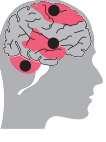
Cerebral Palsy Adwait

Cerebral Palsy Meaning
Understanding Cerebral Palsy: A Comprehensive Overview
Cerebral palsy is a complex neurological disorder that affects movement, muscle tone, and coordination. It is the most common motor disability in childhood, impacting individuals’ lives in various ways. Although cerebral palsy is a lifelong condition, early intervention and appropriate management strategies can significantly improve quality of life and promote independence. In this article, we will explore cerebral palsy in-depth, covering its causes, symptoms, diagnosis, treatment options, and the importance of support for individuals living with this condition.
Cerebral Palsy Symptoms
Understanding Cerebral Palsy:
What Causes Cerebral Palsy
Cerebral palsy is primarily caused by damage to the developing brain, usually before or during birth. However, it can also occur during infancy or early childhood. Several factors can contribute to brain damage, including maternal infections, premature birth, oxygen deprivation, head injuries, or genetic abnormalities. While the exact cause is often unknown, understanding these risk factors can help identify potential preventative measures and support.
Types and Cerebral Palsy Symptoms:
Cerebral palsy encompasses a range of movement disorders, classified into four main types: spastic, dyskinetic, ataxic, and mixed. Spastic cerebral palsy is the most common form and is characterized by muscle stiffness and tightness. Dyskinetic cerebral palsy involves uncontrolled and involuntary movements. Ataxic cerebral palsy affects balance and coordination, leading to shaky movements. Mixed cerebral palsy combines symptoms from two or more types. The severity and combination of symptoms can vary widely among individuals, affecting their ability to walk, talk, eat, and perform daily activities.
Diagnosis:
Diagnosing cerebral palsy involves a thorough evaluation of medical history, developmental milestones, and physical examinations. Doctors may use brain imaging techniques such as MRI or CT scans to identify brain abnormalities. Early detection is crucial for timely intervention and support. In some cases, diagnosis may not occur until a child reaches certain developmental stages.
Treatment and Management:
While there is no cure for cerebral palsy, various treatment options can help manage symptoms and improve overall functioning. These may include physical therapy, occupational therapy, speech therapy, medication, assistive devices, and surgery. The goal of treatment is to enhance mobility, promote communication skills, alleviate pain, and optimize independence. A multidisciplinary approach involving healthcare professionals, therapists, educators, and caregivers is essential to develop personalized treatment plans.
Support and Rehabilitation:
Living with cerebral palsy can present numerous challenges, but with the right support and resources, individuals can lead fulfilling lives. Support networks and community organizations provide valuable assistance, offering emotional support, educational opportunities, and access to adaptive equipment. Rehabilitation programs focus on enhancing social skills, promoting inclusion, and empowering individuals with cerebral palsy to achieve their full potential.
Conclusion:
Cerebral palsy is a complex neurological condition that impacts individuals from infancy into adulthood. While it poses challenges, early intervention, personalized treatment plans, and supportive environments can make a significant difference in managing symptoms and improving quality of life. Educating society about cerebral palsy is vital to foster inclusivity, reduce stigma, and create an environment where individuals with cerebral palsy can thrive and achieve their goals. By promoting awareness and understanding, we can build a more inclusive and supportive society for everyone.
